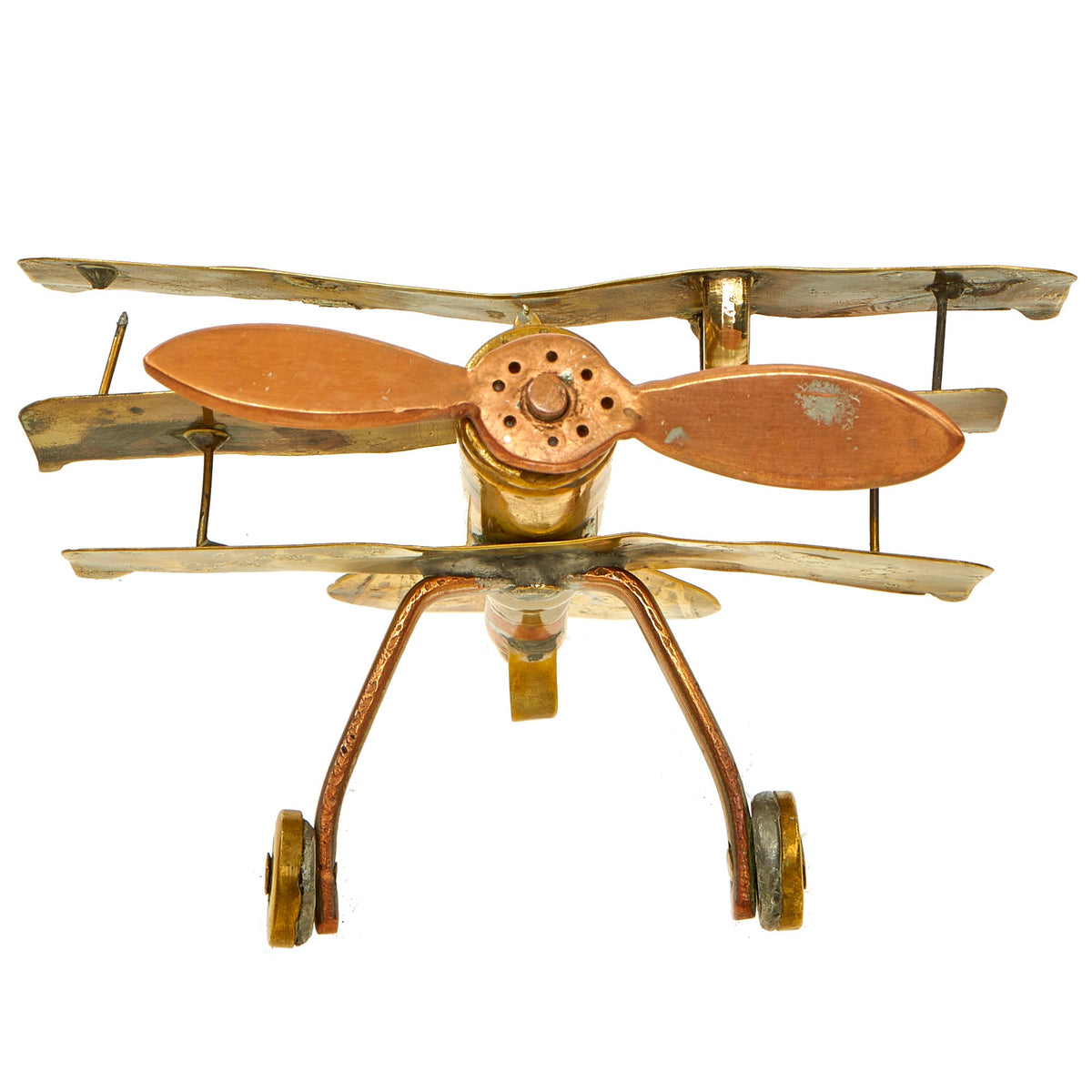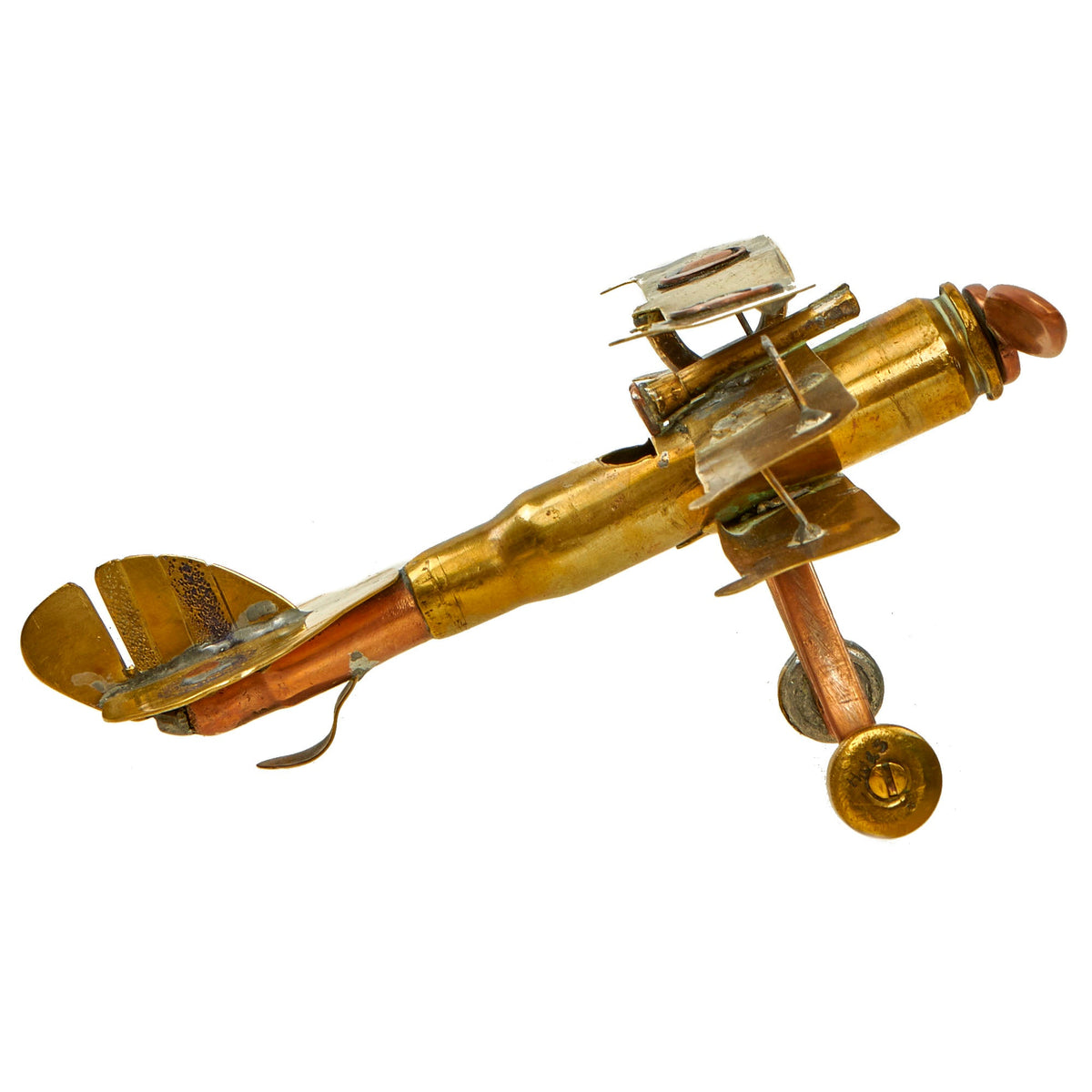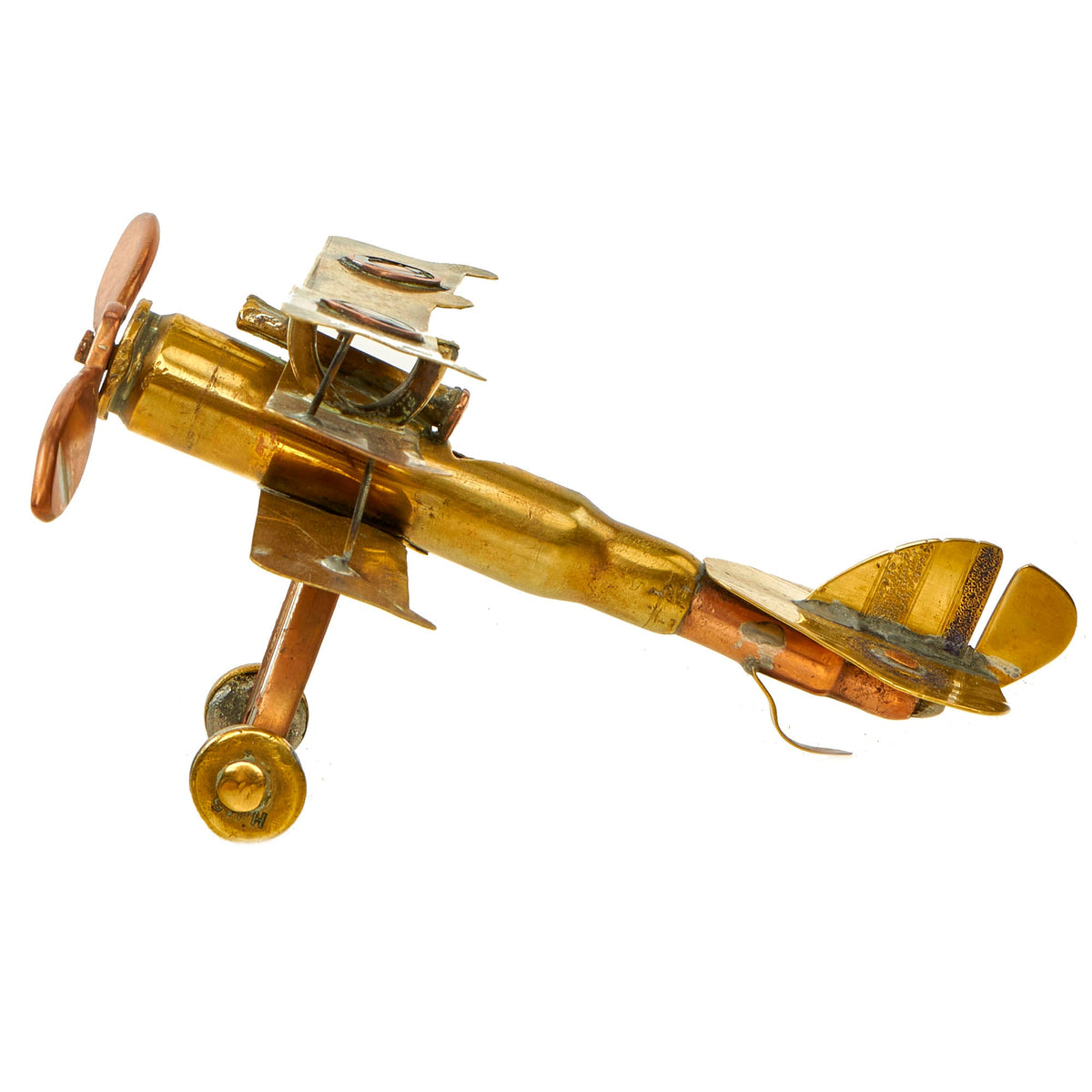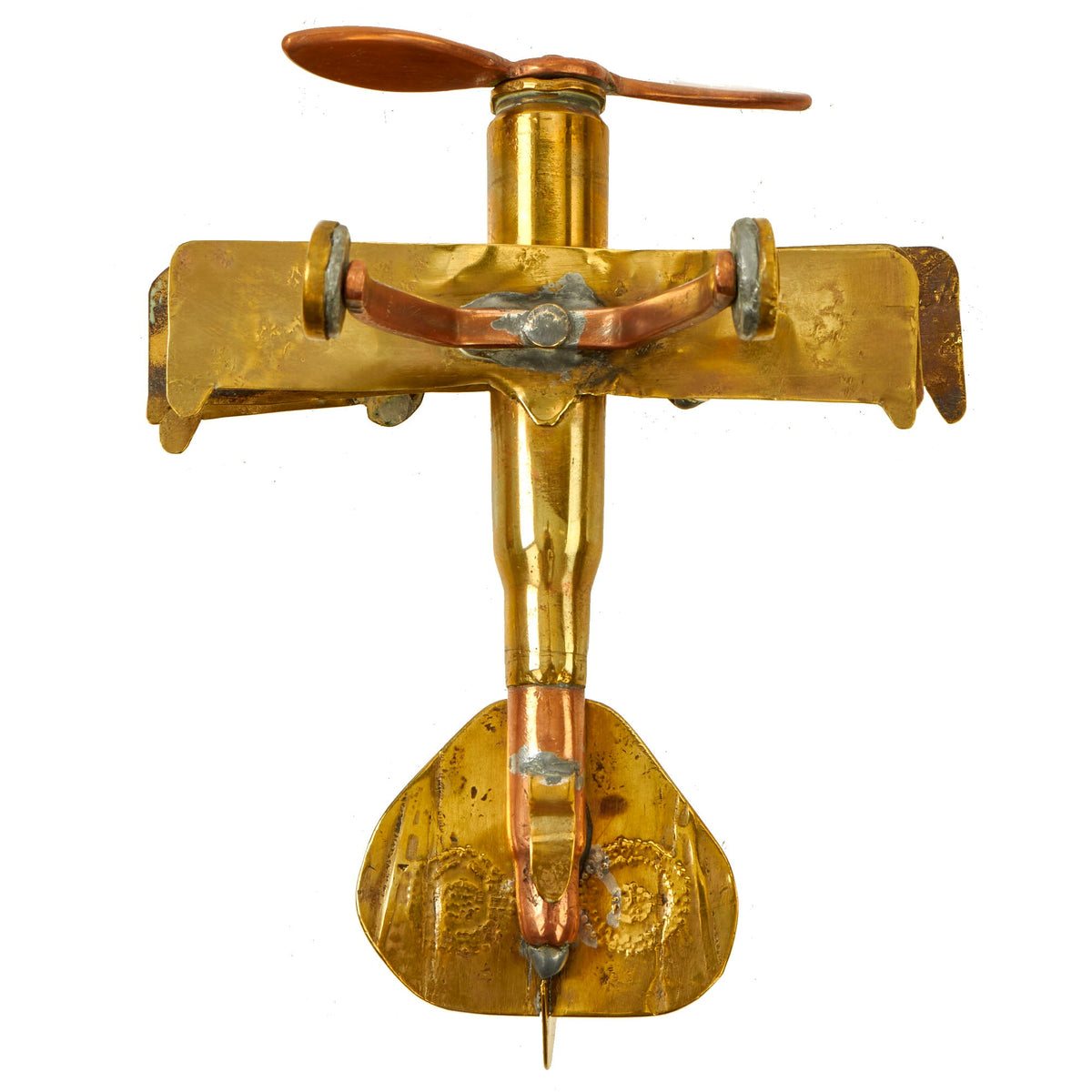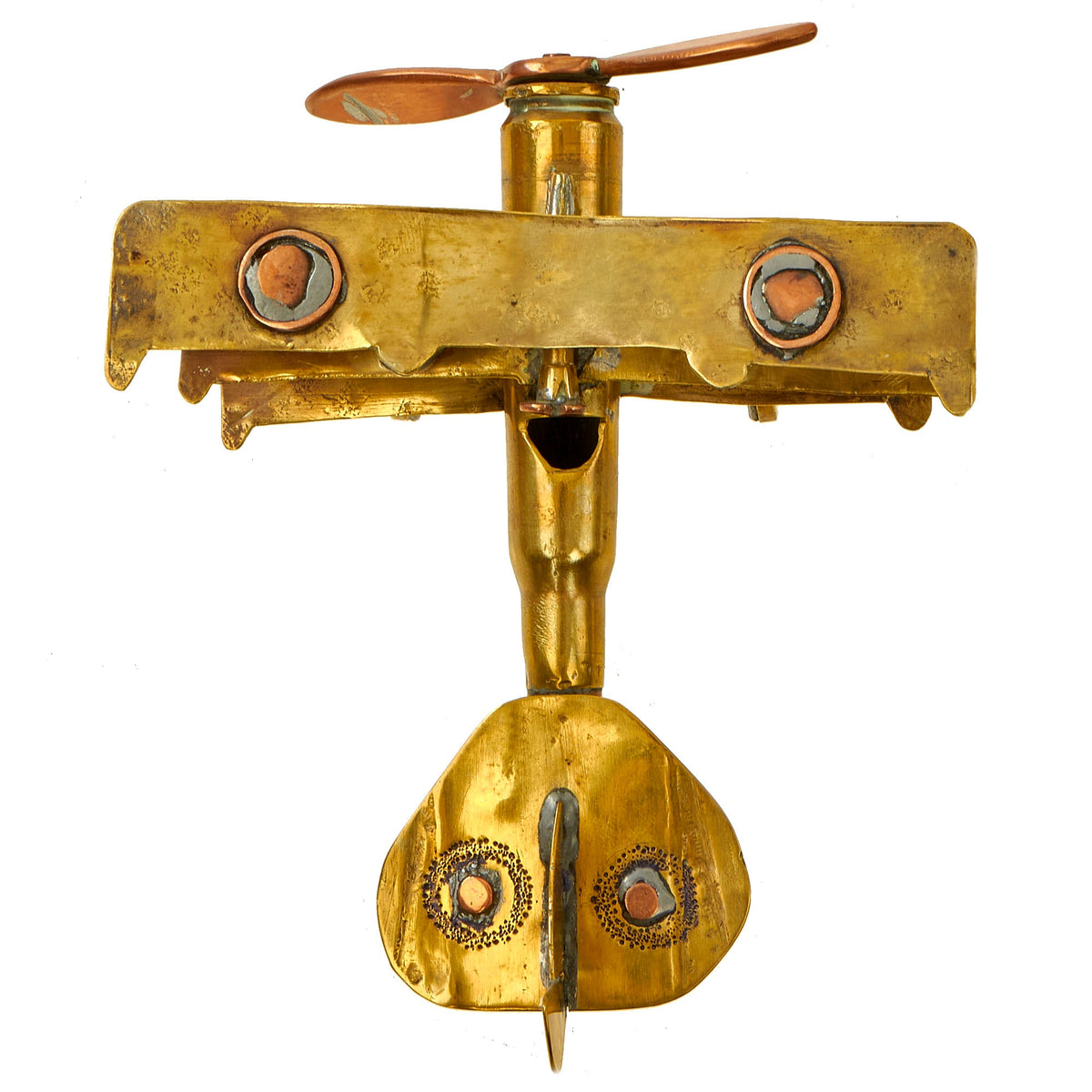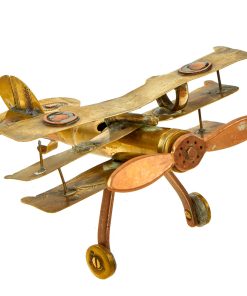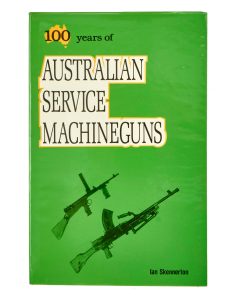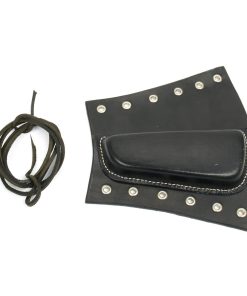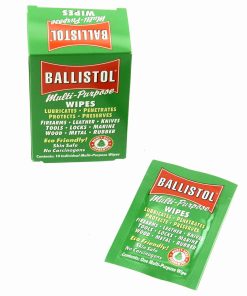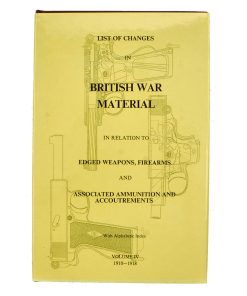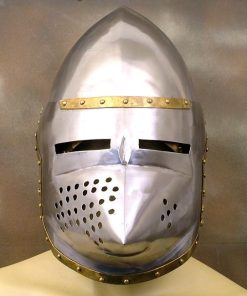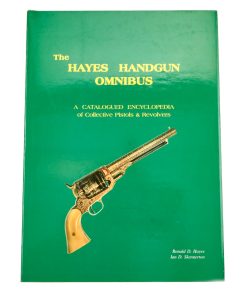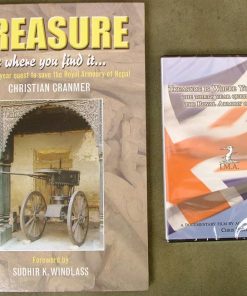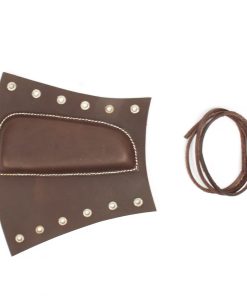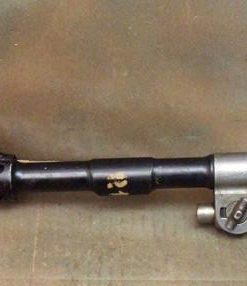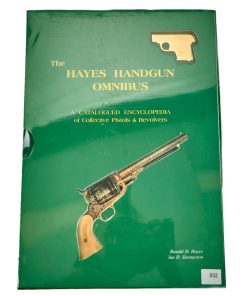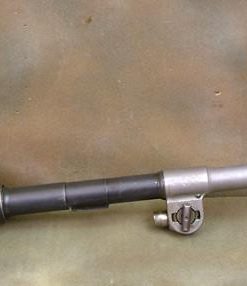Original British WWI Era Sopwith Triplane Trench Art Constructed of Various Cartridges, Bullets and Scrap Brass Original Items
$ 295,00 $ 118,00
Original Item: Only One Available. The is a fabulous brass model of a British World War One Sopwith Triplane. The aircraft measures 5.5″ x 7″. This appears to have once been a desktop table display or even a child’s toy. The entire trench art piece utilizes various rounds including .50 caliber shell casing. The propeller is milled brass. There is some splitting present in various spots as well as disconnect with the soldered interplane struts and a missing support piece.
An incredible memento of a pilot’s time during the Great War.
The Sopwith Triplane was a British single seat fighter aircraft designed and manufactured by the Sopwith Aviation Company during the First World War. It has the distinction of being the first military triplane to see operational service.
The Triplane was developed by the firm’s experimental department as a private venture, the project was headed by the designer Herbert Smith. Aside from its obvious difference in wing configuration, the aircraft shared many similarities with the company’s successful biplane fighter, the Sopwith Pup. The prototype Triplane performed its maiden flight on 28 May 1916 and was dispatched to the French theater two months later, where it garnered high praise for its exceptional rate of climb and high maneuverability. During late 1916, quantity production of the type commenced in response to orders received from the Admiralty. During early 1917, production examples of the Triplane arrived with Royal Naval Air Service squadrons.
The Triplane rapidly proved to be capable of outstanding agility, and thus was quickly deemed to be a success amongst those squadrons that flew it. Praise for the type extended to opposing pilots; Imperial Germany extensively studied the Triplane via captured examples and produced numerous tri-winged aircraft shortly thereafter. Nevertheless, the Triplane was built in comparatively small numbers to that of the more conventional Sopwith Pup. It had been decided to withdraw the Triplane from active service as increasing numbers of the Sopwith Camel arrived in the latter half of 1917. Surviving Triplanes continued to serve as operational trainers and experimental aircraft until months following the end of the conflict.
Fast Shipping with Professional Packaging
Thanks to our longstanding association with UPS FedEx DHL, and other major international carriers, we are able to provide a range of shipping options. Our warehouse staff is expertly trained and will wrap your products according to our exact and precise specifications. Prior to shipping, your goods will be thoroughly examined and securely secured. We ship to thousands clients each day across multiple countries. This shows how we're dedicated to be the largest retailer on the internet. Warehouses and distribution centres can be located throughout Europe as well as the USA.
Note: Orders with more than one item will be assigned a processing date depending on the item.
Before shipping before shipping, we'll conduct a thorough inspection of the items you have ordered. Today, the majority of orders will be delivered within 48 hours. The delivery time will be between 3-7 days.
Returns
The stock is dynamic and we cannot completely manage it because multiple stakeholders are involved, including our factory and warehouse. So the actual stock may alter at any time. It's possible that you may not receive your order once the order has been made.
Our policy is valid for a period of 30 days. If you don't receive the product within 30 days, we are not able to issue a refund or an exchange.
You can only return an item if it is unused and in the same state as the day you received it. You must have the item in its original packaging.
Related products
Uncategorized
Uncategorized
Uncategorized
Uncategorized
Uncategorized
Uncategorized
Uncategorized
Australian WWII Owen MK1 Machine Carbine SMG Custom Fabricated Replica with Sling Original Items
Uncategorized
Uncategorized
Uncategorized
Uncategorized

